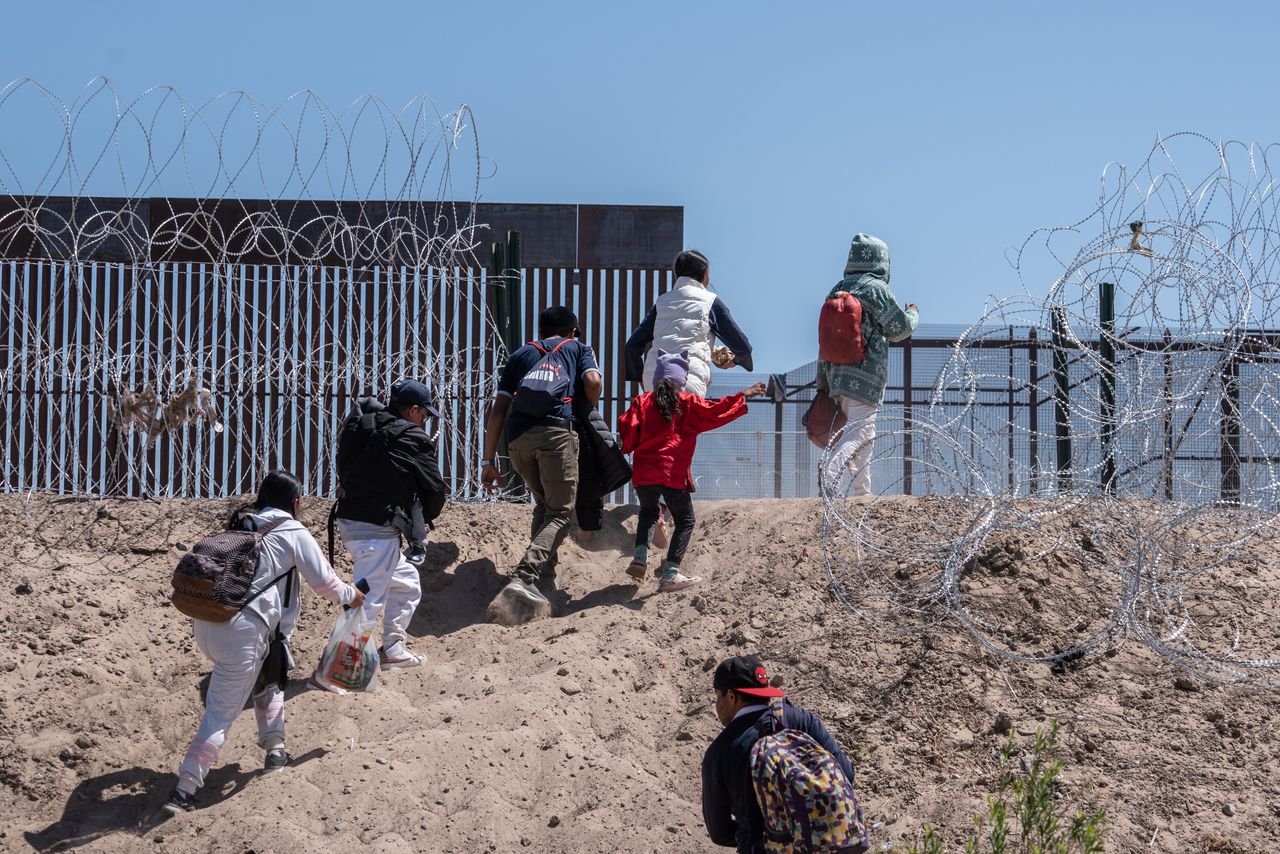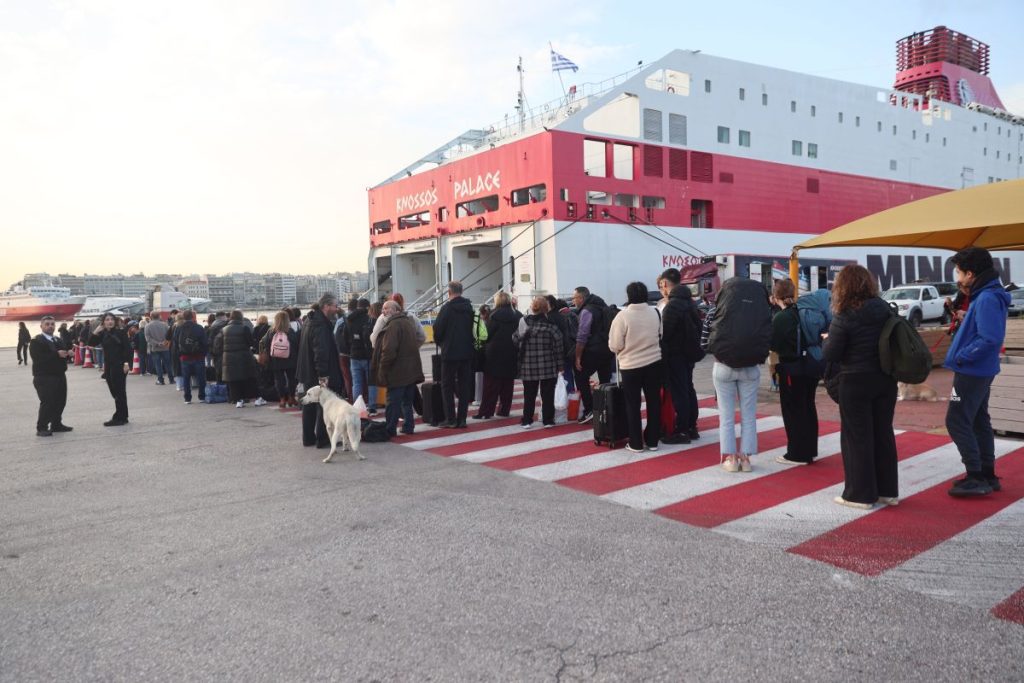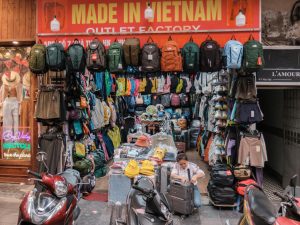Immigration in the Southwest has dominated headlines over the past year. But that story is intertwined with another one that has gotten less attention: the labor market.
Millions of jobs across the country have gone unfilled during 2023 because of an economic rebound and the aging of the U.S. workforce. Meanwhile, the U.S. government apprehended more than two million people trying to cross illegally between ports of entry in the fiscal year that ended in September, similar to the number the year before—people who are willing and eager to fill many of these jobs but have few legal avenues to get to the U.S.
These two stories from the past year are often thought of separately. But they shouldn’t be. Taken together, they represent a missed opportunity: Instead of focusing only on keeping these migrants out of the U.S., the government should create the pathways that make it possible for them to enter legally directly from their countries—a move that would help stem the American labor crisis and improve the lives of millions of people.
A turbulent situation
At the most basic level, we are ignoring the fact that these migrants are eager to work. While it is true that many of them are fleeing corruption, violence and insecurity, they are also coming because of the lure of employment. Most people don’t undertake a long, dangerous and uncertain journey unless they think that there are better opportunities on the other end.
And right now, they know there are jobs waiting. Our labor force—in fact, the future of the country—depends heavily on migrants already.
The U.S. issues around one million new green cards each year, along with 400,000 new students and over a million temporary workers and exchange visitors arriving each year. Anywhere from three-quarters to four-fifths of all immigrants are legally present in the country, and they come from a range of countries, with people from Asia and Latin America making up the largest percentage.
Overall, almost 14% of the U.S. population and 17% of the workforce was born abroad, and 1 in 4 Americans have at least one foreign-born parent. Most population growth is now coming from immigration, and all of it will after 2042, according to current predictions.
Given that situation, the solution to our job crisis seems obvious: Bring in more people who will fill those jobs, and bring them in legally. But we aren’t doing that. The result is that on any given month in 2023, there were eight to 10 million jobs open.
The system isn’t just illogical; it is unworkable and counterproductive. The Border Patrol apprehends anywhere from 5,000 to 7,000 migrants a day crossing without authorization, but can fully process only a fraction of them, with most released into the U.S. This encourages people to try to cross illegally in hopes of getting into the country—undermining the credibility of the immigration system and adding even further to the immigration case backlog, which is now over 2.7 million immigration cases.
Most of those who enter the country quickly find jobs because many have social ties in the country, usually family members or friends who can lend them a couch to sleep on and connect them to potential employers. They end up entering the services sector, construction and care work, where there are large informal economies.
Many jobs get filled in this gray economy, but many employers who want to follow the rules find they can’t hire any of these potential workers. It is a highly inefficient system that doesn’t allow for a close match between available workers and existing employment opportunities, while also expanding an already large unauthorized population in the country.
Until three years ago, most migrants coming to the border came from Central America and Mexico, but today they come from dozens of different countries around the world. The smugglers who transport migrants have helped migrants to breach the once almost impenetrable Darién Gap, a stretch of jungle between Colombia and Panama that historically served as a barrier for those coming from farther south.
Over 400,000 people, many of them families with children, have crossed through this jungle since January, often in unbelievably dangerous and difficult circumstances. Almost two-thirds of those crossing the Darién Gap are from Venezuela—where over a quarter of the population has left—but there are others, including Haitians, Colombians, Ecuadoreans and migrants from countries farther afield in Asia, the Middle East and Africa.
This makes it more urgent to think about legal pathways not just from the countries closest to the U.S., but also from places farther away, to match workers and employers. Many of the migrants arriving through the Darién Gap don’t have connections in the U.S., the way most Central American and Mexican migrants do, so some of them have ended up in shelters in major cities like New York, Chicago and Denver, instead of with family and friends. Finding ways of ensuring legal entry would go a long way to helping them enter the labor force quickly and alleviate the current costs to cities and states that are creating an understandable public pushback in those places.
Addressing the problem
The Biden administration is trying a new approach to manage migration. In January, the administration announced that it was opening 30,000 slots a month for Cubans, Haitians, Nicaraguans and Venezuelans to enter the country with humanitarian parole. They can get work authorization for two years if they have a sponsor who is legally present in the U.S. And the government has been trying to scale up seasonal work programs from Central America and Mexico as well.
Then, in April, the administration announced that it would open up offices across the hemisphere to allow people to apply for refugee protection before they reach the border, as well as get information on how to access other legal pathways. The administration also sought to create an orderly system at ports of entry for those who wanted to apply for asylum, while making it harder for those who cross between ports of entry to qualify for protection.
It is the right idea, but the effort remains a work in progress. Most Cubans and Haitians have stopped crossing the border illegally, using the humanitarian-parole options instead, but the plan has worked less well for Venezuelans and Nicaraguans, who are less likely to know someone who can sponsor them in the U.S.
Seasonal-worker programs are expanding, but only slowly because of low caps on how many visas can be issued in some sectors. And the system for screening migrants for protection needs between ports of entry—which is supposed to be a high bar and discourage illegal crossings—has proven to be difficult to implement in practice and led to many being released into the country.
If the interwoven story lines in 2023 were all about labor shortages and the immigration crisis, perhaps the story lines in 2024 will be about fixing some of this—creating legal pathways for employment, further ramping up refugee resettlement and building an orderly and enforceable system for entry and asylum processing. That may be too much change to hope for in the new year, especially since it requires both houses of Congress and the administration to get on the same page, but is worth hoping for.
Andrew Selee is president of the Migration Policy Institute. He can be reached at reports@wsj.com.



